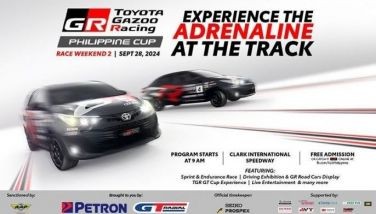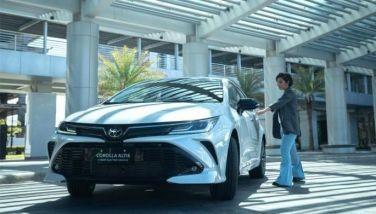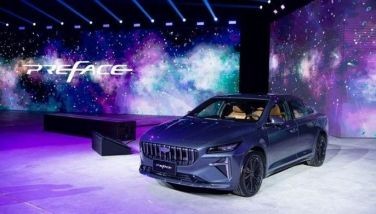Hyundai Tucson creates a new world order
Not only is this Tucson much smoother and more poised than its predecessor, but it’s smoother and more poised than most of its rivals in the segment.
For most people, 2009 doesn’t seem like that long ago. For Hyundai though, this particular year was when everything began to change thanks to the introduction of Fluidic Sculpture and the second-generation Tucson. The swoopy, expressive lines introduced in the compact crossover enabled the Korean car brand to raise its flag not as a manufacturer of affordable utilitarian transport, but as a company that builds fashionable, well-equipped, and high-quality cars.
It’s no secret that Hyundai is in a much better place than it was nearly six years ago and the importance of the Tucson has grown tremendously. Much as the second-generation model helped to signal Hyundai’s arrival as a global player, it hopes this all-new third-generation model marks its entry as one of the industry’s premiere crossover builders. And based on a day of driving from Roxas City to Caticlan, this seems to be an attainable goal.
Described as a sporty, stylish, and modern crossover, it comes as a surprise that Hyundai has fitted carryover engines for 2016. Of the two engines available, the more interesting one is the R 2.0-liter CRDi engine that does 178 hp at 4,000 rpm and 402 Nm of torque from 1,750 to 2,750 rpm. It’s more interesting because Hyundai has finally fitted this powerhouse of an engine to more than just its AWD variant. For this third-generation model, you can opt for this engine in both the mid-grade 2WD and range-topping 4WD variant. There’s also the Nu 2.0-liter gasoline with 157 hp at 6,200 rpm and 196 Nm of torque at 4,000 rpm.
Regardless of engine, Hyundai says that it’s faster to 100 km/h than the previous model and can actually do in-gear acceleration quicker. Overall, the gasoline does alright: it’s smooth, quiet, and unobtrusive at all but near the limit where things can get coarse. However, once you sample the awesomeness of the diesel, you simply wouldn’t want to drive anything else. There’s a split-second of lag before a strong surge of torque comes in. In a straight line, there’s almost no wheel spin because electronic stability control is now standard equipment on all diesel-engined variants. In both the gasoline and diesel versions, the 6-speed automatic is a willing player, delivering quick and smooth gear changes all the way. Downshifts aren’t as quick as upshifts, but at least the transmission logic doesn’t get confused even when gunning at breakneck speeds. Sadly, Hyundai has refused to fit any sort of paddle shifters on the all-new Tucson.
Despite being fitted with electronic stability control, the diesel-fed 2WD model still does have a tendency to torque steer at low speeds, like encountering a sharp bend while quickly accelerating. Hence is why it’d be a good idea to opt for the active on-demand all-wheel drive system which integrates torque vectoring control for the first time. The Magna-sourced system is capable to shifting torque to the wheel with the most grip providing sure-footedness even when driving quickly through loose gravel. Most of the time, the system is transparent, however, when pushed, you do feel the system shifting torque around. There’s also a lock mode that forces the torque distribution equally between the front and the back, but with just 162mm of ground clearance, this feature is just limited to getting out of unpaved driveways. In addition, because of the additional weight of this AWD, it doesn’t feel as quick to drive as the 2WD.
The Tucson’s overall structure has been strengthened with 51 percent advanced high-strength steel that increases rigidity by 48 percent. The result of these efforts is a far more refined and comfortable crossover. Across different terrains encountered during the driving route, it managed all the bumps and imperfections. The suspension has no issue preventing potholes and other big impacts from entering the cabin, and whatever is left is muted. The ride is stable over smaller bumps as well. In short, not only is this Tucson much smoother and more poised than its predecessor, but it’s smoother and more poised than most of its rivals in the segment.
In terms of fun, it still isn’t the segment’s leader, but it gets pretty close sometimes. The steering has the correct heft and precision giving a largely linear feel through corners. The body does tend to roll, but it’s predictable and progressive. It feels planted over crests and undulating roads as well. If there’s anything that needs to be improved in the Tucson is the lack of feedback. Granted it tackles corners and curves very well, it feels more like a one-way street with nothing getting back to the driver.
Fluidic Sculpture 2.0 is meant as an encompassing design language that goes beyond mere design. It’s meant to make the entire experience from aesthetics to fit and finish to durability all part of the design aspect. First introduced in the all-new Sonata, it looks way better in a crossover format. The Tucson looks to have grown in all the right places to accommodate the hexagonal grille, slimmed headlights, squat greenhouse, and thinner tail lamps. Overall, it’s a tad longer and wider, and just slightly lower resulting to one of the biggest, if not the biggest interior volume in its class. That said, something’s got to give and in the Tucson, it’s luggage capacity: limited to just 513 liters.
Despite its role as a family transport, the Tucson’s cabin feels every bit like a driver’s car. The seats, in standard leather, are tightly bolstered and comfortable. All the controls are nicely arranged and clearly labeled for easy operation, and the gauges are one of the best fitted in a mainstream vehicle. The single best thing about the cabin though is the new small-diameter leather steering wheel. Being a constant touch point, Hyundai has made it a point to make it feel like it comes from a performance vehicle.
Technology is one aspect where the second-generation Tucson hasn’t fared well. For this third-generation model though, Hyundai has made sure to fit the Tucson will all sorts of modern creature comfort features. On all models, a passive entry system with push-button start/stop is standard and so is a powered driver’s seat. Opting for the AWD, you get LED headlights, a massive panoramic sunroof, blind spot monitoring with cross-traffic alert, and powered Smart Tailgate. Though Hyundai has yet to announce the final pricing, they say it starts at P1,178,000 and tops up at P1,538,000. Not bad considering the amount of new stuff you get.
The second-generation Tucson made the brand into a formidable global player selling some three million examples globally. Now, the 2016 model does the job of elevating the Tucson straight crossover premiere league. It’s a standout entry that does all the stuff a crossover should while presenting a sleek design, an entertaining engine (at least for the diesel), and all the technology consumers demand nowadays. If Hyundai wants to be seriously considered as a crossover brand, the all-new Tucson is a great way to do it.
- Latest


























